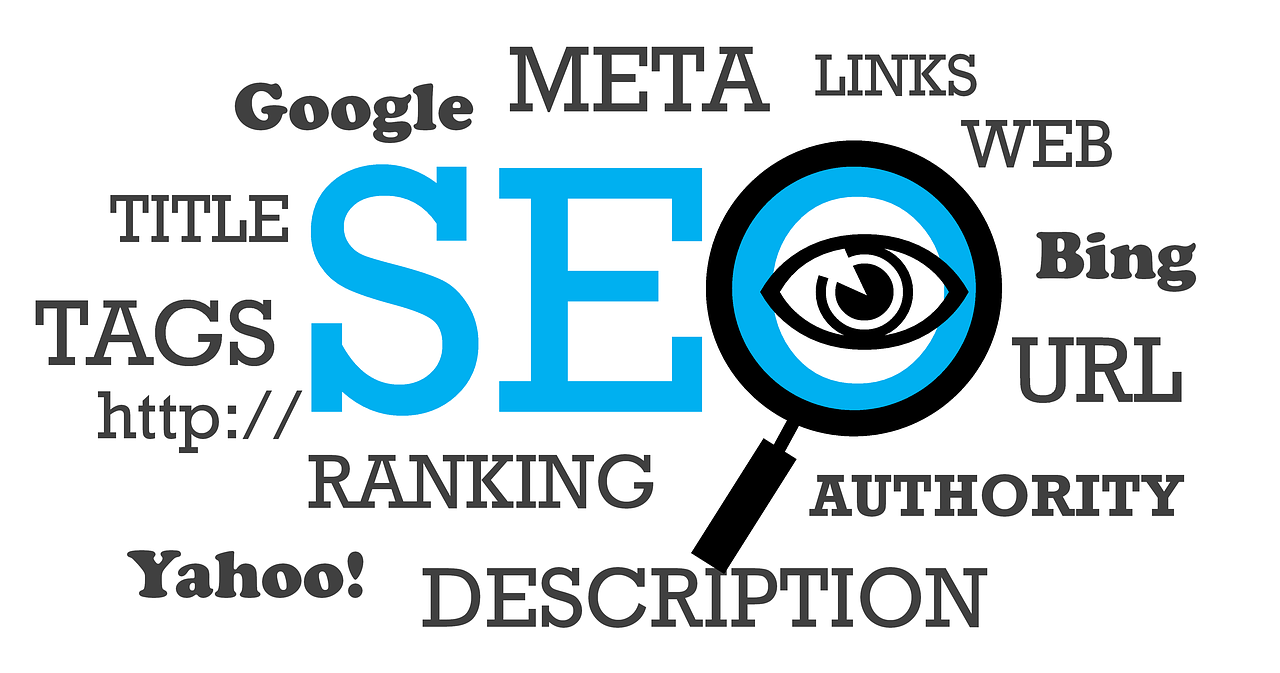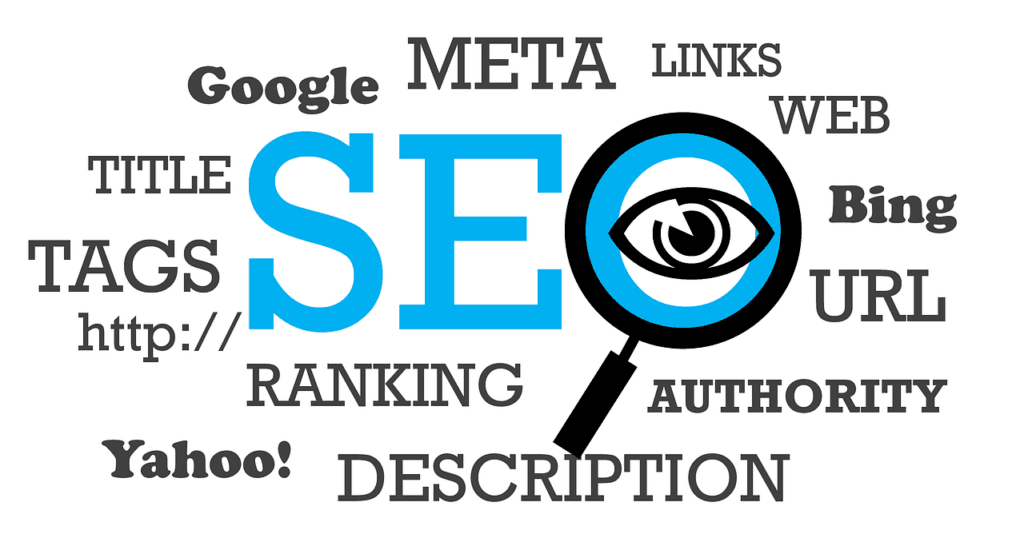This Article has been revised, edited and added to, by Poulomi Chakraborty.
- Understanding Dental SEO
- On-Page SEO vs. Off-Page SEO: A Comparative Analysis
- Local SEO for Dental Practices
- Implementing Dental SEO Strategies
- Content Marketing for Dental SEO
- Local SEO for Dental Practices
- Analytics and Monitoring
- Advanced Dental SEO Strategies
- Utilizing Analytics and Monitoring Tools
- Case Studies and Examples of Successful Dental SEO
- Leveraging Social Media for Dental SEO
- Enhancing User Experience (UX) for SEO
- Voice Search Optimization
- Implementing AI and Machine Learning in SEO
- Conclusion
In today’s digital age, having an online presence is crucial for any business, including dental practices. With more people turning to the internet to find healthcare providers, it’s vital that your dental practice can be easily found online. This is where Dental SEO (Search Engine Optimization) comes into play. Dental SEO is the process of optimizing your dental practice’s website to rank higher in search engine results, thus attracting more potential patients. In this guide, we’ll cover everything you need to know about Dental SEO, from understanding its importance to implementing effective strategies.
Understanding Dental SEO

Dental SEO involves a series of strategies and techniques aimed at improving the visibility of a dental practice’s website on search engines like Google. The ultimate goal is to attract more organic traffic to the site, leading to an increase in new patient inquiries and appointments.
Unlike paid advertisements, SEO focuses on long-term results by improving the website’s content, structure, and overall user experience.
Why Dental SEO Matters
Before diving into the strategies, it’s important to understand why Dental SEO is so essential. Here are a few key reasons:
- Increased Visibility: The higher your website ranks on search engines, the more likely it is that potential patients will find you.
- Credibility and Trust: Websites that rank higher are often perceived as more credible and trustworthy by users.
- Cost-Effective Marketing: SEO is a cost-effective marketing strategy compared to traditional advertising methods.
- Competitive Edge: Effective SEO can give you an edge over competitors who are not utilizing these strategies.
On-Page SEO vs. Off-Page SEO: A Comparative Analysis
To effectively implement Dental SEO, it’s essential to understand the two main types: On-Page SEO and Off-Page SEO. Both play crucial roles in improving your website’s ranking but involve different tactics.
On-Page SEO
On-Page SEO refers to all the actions you can take directly on your website to improve its search engine ranking. This includes optimizing content, improving site structure, and enhancing user experience. Here’s a closer look at the key components of On-Page SEO:
Content Optimization
Content is king when it comes to SEO. High-quality, relevant content that addresses the needs and queries of your audience is essential. For a dental practice, this could include blog posts about dental hygiene tips, detailed service descriptions, patient testimonials, and more.
- Keyword Research: Identifying and using the right keywords is crucial. These are the terms potential patients use to search for dental services online. Tools like Google Keyword Planner can help you find relevant keywords.
- Meta Tags: Meta titles and descriptions should be optimized with keywords to improve visibility on search engines.
- Headings: Using H1, H2, and H3 tags appropriately helps search engines understand the structure of your content.
Site Structure and Navigation
A well-structured website that is easy to navigate not only enhances user experience but also helps search engines crawl and index your site more effectively.
- URL Structure: URLs should be clean and descriptive, including relevant keywords where possible.
- Internal Linking: Linking to other pages within your website helps search engines understand the relationship between your content and keeps visitors engaged longer.
- Mobile Optimization: With more people using mobile devices to browse the web, ensuring your website is mobile-friendly is crucial for both user experience and SEO.
Technical SEO
Technical aspects of SEO, though often overlooked, are equally important.
- Page Speed: A slow-loading website can negatively impact user experience and search rankings. Tools like Google PageSpeed Insights can help identify areas for improvement.
- SSL Certificate: Having a secure website (HTTPS) is a ranking factor for Google and builds trust with your visitors.
- XML Sitemap: Submitting an XML sitemap to search engines helps them understand the structure of your site and index it more effectively.
Off-Page SEO
Off-Page SEO refers to actions taken outside of your website to improve its authority and ranking. This primarily involves building backlinks and enhancing your online reputation.
Backlink Building
Backlinks are links from other websites to your site. They are a crucial factor in determining your site’s authority and ranking.
- Quality Over Quantity: Focus on obtaining backlinks from reputable and relevant websites rather than aiming for a large number of low-quality links.
- Guest Blogging: Writing guest posts for other websites in the dental or healthcare niche can help you earn valuable backlinks.
- Local Listings and Directories: Ensure your practice is listed on local directories like Google My Business, Yelp, and dental-specific directories. This not only provides backlinks but also helps with local SEO.
Social Media Engagement
While social media signals are not a direct ranking factor, having an active social media presence can drive traffic to your site and increase brand awareness.
- Share Content: Regularly share your blog posts, updates, and promotions on social media platforms.
- Engage with Followers: Respond to comments and messages promptly to build a strong online community.
Online Reviews
Positive reviews on platforms like Google My Business and Yelp can enhance your online reputation and indirectly boost your SEO efforts.
- Encourage Reviews: Ask satisfied patients to leave reviews. You can do this through follow-up emails or in-person requests.
- Respond to Reviews: Address both positive and negative reviews professionally to show that you value patient feedback.
Local SEO for Dental Practices
Local SEO is especially important for dental practices since most patients are looking for local services. This involves optimizing your online presence to attract more business from relevant local searches.
Google My Business
Creating and optimizing a Google My Business (GMB) listing is one of the most effective ways to improve your local SEO.
- Complete Your Profile: Ensure all information on your GMB profile is accurate and complete, including your address, phone number, website, and business hours.
- Add Photos: High-quality photos of your practice can attract more clicks and engagement.
- Collect Reviews: Positive reviews on your GMB listing can significantly improve your local search rankings.
Local Keywords
Incorporate local keywords into your website content and meta tags. These are phrases that include your location, such as “dentist in [city]” or “dental implants [city].”
- Location Pages: If your practice serves multiple locations, create separate pages for each location with unique content and keywords.
- Local Content: Publish blog posts and articles that focus on local events, news, or topics related to your community.
Local Citations
Ensure your practice is listed on local directories and citation sites. Consistency is key, so make sure your name, address, and phone number (NAP) are the same across all listings.
- NAP Consistency: Inconsistent information can confuse search engines and potential patients.
- Local Directories: List your practice on local business directories and dental-specific directories.
Implementing Dental SEO Strategies

Implementing Dental SEO strategies requires a comprehensive approach, covering various aspects from keyword research to content creation and technical optimization. Each element plays a vital role in enhancing your website’s visibility and attracting potential patients.
Keyword Research and Content Creation
Effective keyword research is the foundation of any successful SEO strategy. It involves identifying the terms and phrases potential patients use to search for dental services online.
Tools like Google Keyword Planner, Ahrefs, and SEMrush can help you find relevant keywords. Once you have a list of keywords, the next step is to create high-quality content that incorporates these terms naturally.
When creating content, focus on providing value to your audience. Write informative blog posts that answer common questions about dental health, explain different procedures, and offer tips for maintaining oral hygiene.
Ensure your content is well-structured, easy to read, and free of jargon. Use headings and subheadings to break up the text and make it more digestible.
In addition to blog posts, consider creating other types of content such as videos, infographics, and patient testimonials. Videos can be particularly effective, as they allow you to explain complex procedures in a simple and engaging way.
Infographics can visually represent important information, making it easier for readers to understand. Patient testimonials build trust and credibility, showing potential patients that others have had positive experiences with your practice.
Technical SEO and User Experience
Technical SEO involves optimizing the technical aspects of your website to improve its performance and make it easier for search engines to crawl and index your pages. One of the most important elements of technical SEO is page speed.
A fast-loading website not only provides a better user experience but also ranks higher in search engine results. Use tools like Google PageSpeed Insights to identify issues that may be slowing down your site and take steps to resolve them.
Another critical aspect of technical SEO is mobile optimization. With more people using smartphones and tablets to browse the web, it’s essential that your website is mobile-friendly. Ensure that your site is responsive, meaning it adjusts to fit any screen size, and that all elements are easy to navigate on a mobile device.
An SSL certificate is also crucial for both security and SEO. Websites with HTTPS are seen as more secure by both users and search engines, which can positively impact your rankings. Additionally, submitting an XML sitemap to search engines helps them understand the structure of your site and index it more effectively.
Enhancing Online Reputation and Building Backlinks
Building a strong online reputation is essential for attracting new patients and improving your search engine rankings. One of the best ways to do this is by encouraging satisfied patients to leave positive reviews on platforms like Google My Business and Yelp.
Positive reviews not only enhance your reputation but also serve as a form of social proof, showing potential patients that others have had good experiences with your practice.
Responding to reviews, both positive and negative, is also important. Acknowledging and addressing feedback shows that you value your patients’ opinions and are committed to providing excellent service. This can help build trust and encourage more people to choose your practice.
Backlinks are another critical component of off-page SEO. These are links from other websites to your site, and they play a significant role in determining your site’s authority and ranking.
Focus on obtaining backlinks from reputable and relevant websites. One effective strategy is guest blogging, where you write articles for other websites in the dental or healthcare niche in exchange for a backlink to your site.
Participating in local events and community activities can also help you earn backlinks from local news sites and community organizations. Additionally, ensuring your practice is listed on local directories and citation sites can provide valuable backlinks and improve your local SEO.
Monitoring and Adjusting Your SEO Strategy
Implementing an SEO strategy is not a one-time task. It requires ongoing monitoring and adjustments to ensure that your efforts are effective and that you are keeping up with changes in search engine algorithms and industry trends.
Use tools like Google Analytics and Google Search Console to track your website’s performance, including traffic, bounce rates, and keyword rankings.
Regularly review your content to ensure it remains relevant and up-to-date. This might involve updating old blog posts with new information, adding new keywords, or creating fresh content based on the latest trends and patient queries.
Keep an eye on your competitors to see what strategies they are using and identify any gaps in your own approach that you can address.
Engage with your audience through social media and email newsletters to keep them informed about new content, services, and promotions. This not only drives traffic to your site but also helps build a loyal community around your practice.
Content Marketing for Dental SEO
Content marketing is a powerful tool for improving your dental practice’s SEO. By consistently creating and sharing valuable content, you can attract and engage potential patients, establish your authority in the field, and improve your search engine rankings.
Developing a Content Strategy
A well-thought-out content strategy is essential for success. Start by identifying your target audience and their needs. Understand what questions they have, what information they are seeking, and what challenges they face regarding dental health. This will help you create content that resonates with them and provides real value.
Create a content calendar to plan and organize your content efforts. This should include a mix of blog posts, videos, infographics, and other formats to keep your audience engaged.
Aim to publish content regularly, but prioritize quality over quantity. Each piece of content should be well-researched, informative, and optimized for search engines.
Creating Engaging Blog Posts
Blogging is a cornerstone of content marketing and an excellent way to improve your SEO. Write blog posts that address common dental concerns, explain procedures, and offer tips for maintaining oral health. Use clear, simple language and avoid technical jargon to ensure your content is accessible to a broad audience.
Incorporate relevant keywords naturally throughout your posts, especially in the titles, headings, and first paragraph. However, avoid keyword stuffing, as this can negatively impact your rankings and readability. Include internal links to other relevant pages on your site to improve navigation and keep visitors engaged longer.
Utilizing Video Content
Video content is highly engaging and can effectively convey complex information in a simple, easy-to-understand format. Create videos that explain dental procedures, provide oral health tips, and showcase patient testimonials. Ensure your videos are high-quality and professional, as this reflects on the overall image of your practice.
Optimize your videos for SEO by including relevant keywords in the titles, descriptions, and tags. Transcribe your videos and include the text on your website to make the content accessible to search engines and users who prefer reading. Share your videos on platforms like YouTube, social media, and your website to reach a wider audience.
Leveraging Infographics
Infographics are a visually appealing way to present information and can be highly shareable, increasing your reach and earning valuable backlinks. Use infographics to explain dental procedures, illustrate the benefits of different treatments, or provide statistical information about dental health.
Ensure your infographics are well-designed and easy to understand. Include your logo and website URL to promote your practice when the infographic is shared on other sites or social media. Publish infographics on your blog and encourage other websites to share them, linking back to your site.
Local SEO for Dental Practices

Local SEO is crucial for dental practices, as most patients are looking for local services. Optimizing your online presence for local searches can significantly increase your visibility and attract more patients.
Optimizing Your Google My Business Listing
Google My Business (GMB) is a free tool that allows you to manage your online presence on Google, including Search and Maps. A well-optimized GMB listing can improve your local search rankings and attract more potential patients.
Ensure all information on your GMB profile is accurate and complete, including your address, phone number, website, and business hours. Add high-quality photos of your practice, team, and services to make your listing more appealing. Collect and respond to reviews to build your reputation and show potential patients that you value their feedback.
Incorporating Local Keywords
Using local keywords in your content and meta tags is essential for local SEO. These are phrases that include your location, such as “dentist in [city]” or “dental implants [city].” Incorporate these keywords naturally into your website content, including blog posts, service pages, and meta descriptions.
Create location-specific pages if your practice serves multiple areas. Each page should have unique content tailored to the needs and queries of patients in that location. Publish blog posts and articles that focus on local events, news, or topics related to your community to increase your relevance for local searches.
Building Local Citations
Local citations are mentions of your practice’s name, address, and phone number (NAP) on other websites, such as online directories and citation sites. These citations help search engines verify your business information and improve your local search rankings.
Ensure your NAP information is consistent across all listings, as discrepancies can confuse search engines and potential patients. List your practice on local business directories, dental-specific directories, and review sites. Encourage patients to leave reviews on these platforms to enhance your online reputation and attract more local traffic.
Analytics and Monitoring
Monitoring your SEO efforts is crucial to understand what’s working and where you need to make improvements. Use tools like Google Analytics and Google Search Console to track your website’s performance and gain insights into your audience’s behavior.
Tracking Key Metrics
Identify key metrics that indicate the success of your SEO efforts. These might include organic traffic, bounce rates, average session duration, and conversion rates. Regularly review these metrics to assess the effectiveness of your strategies and make data-driven decisions.
Analyze your keyword rankings to see how well your content is performing for your targeted keywords. Use tools like Ahrefs or SEMrush to track your rankings and identify opportunities for improvement.
Monitor your backlinks to ensure you’re gaining high-quality links from reputable sources and disavow any spammy or low-quality links that could harm your rankings.
Adjusting Your Strategy
SEO is an ongoing process that requires regular adjustments to stay effective. Use the insights gained from your analytics to refine your strategy and focus on areas that need improvement.
Update your content regularly to ensure it remains relevant and accurate. This might involve adding new information, optimizing for new keywords, or refreshing outdated blog posts.
Stay informed about changes in search engine algorithms and industry trends to keep your SEO strategy up-to-date. Engage with your audience through social media, email newsletters, and other channels to build a loyal community around your practice and drive more traffic to your site.

Advanced Dental SEO Strategies
After covering the basics of Dental SEO, it’s essential to dive into advanced strategies that can further enhance your online presence and drive more traffic to your website. These strategies involve more technical aspects and require a deeper understanding of SEO principles.
Advanced Link Building Techniques
Link building remains one of the most critical components of SEO. While obtaining backlinks from reputable websites is essential, advanced link building techniques can help you gain even more authority and improve your rankings.
Guest Blogging
Guest blogging on high-authority websites in the dental and healthcare niche can significantly boost your SEO. When writing guest posts, ensure the content is of high quality and provides value to the readers. This not only helps you earn backlinks but also establishes you as an authority in your field.
Broken Link Building
Broken link building involves finding broken links on other websites and offering your content as a replacement. Use tools like Ahrefs or SEMrush to identify broken links on relevant websites. Reach out to the site owners and suggest your content as a replacement, providing them with a helpful solution while earning a valuable backlink.
Skyscraper Technique
The Skyscraper Technique involves finding high-performing content in your niche, creating an even better version, and promoting it to gain backlinks. Identify top-ranking content on topics related to dental care, create a more comprehensive, engaging, and updated version, and reach out to websites that linked to the original content to promote your improved version.
Mobile-First Indexing
With the increasing use of mobile devices, Google has shifted to mobile-first indexing, meaning it primarily uses the mobile version of your site for ranking and indexing. Ensuring your website is mobile-friendly is crucial for maintaining and improving your search rankings.
Responsive Design
Ensure your website uses a responsive design that adjusts to fit any screen size, providing a seamless user experience across devices. Check that all elements, including images, videos, and forms, function correctly on mobile devices.
Mobile Page Speed
Mobile page speed is a critical factor in user experience and SEO. Optimize your website to load quickly on mobile devices by compressing images, leveraging browser caching, and minimizing JavaScript. Use tools like Google PageSpeed Insights to identify and fix issues that may be slowing down your site.
AMP (Accelerated Mobile Pages)
Implementing AMP can significantly improve the loading speed of your mobile pages. AMP is a framework designed to create fast-loading mobile pages by stripping down unnecessary elements and optimizing content for speed. While it may require some technical expertise, the benefits in terms of user experience and SEO can be substantial.
Leveraging Core Web Vitals
Core Web Vitals are a set of metrics that Google uses to measure user experience on your website. These metrics include Largest Contentful Paint (LCP), First Input Delay (FID), and Cumulative Layout Shift (CLS). Optimizing these elements can improve your website’s performance and rankings.
Largest Contentful Paint (LCP)
LCP measures how quickly the main content of a page loads. Aim to have your LCP occur within 2.5 seconds of the page starting to load. Optimize your images, use a fast hosting service, and implement caching to improve LCP.
First Input Delay (FID)
FID measures the time it takes for a page to become interactive. A good FID score is less than 100 milliseconds. Reduce the impact of third-party code, minimize JavaScript execution time, and use a content delivery network (CDN) to improve FID.
Cumulative Layout Shift (CLS)
CLS measures the visual stability of a page, ensuring that elements don’t move unexpectedly. Aim for a CLS score of less than 0.1. Use size attributes for images and videos, avoid inserting content above existing content, and ensure that ads have reserved space to improve CLS.
Schema Markup and Structured Data
Schema markup and structured data help search engines understand the content of your website better, leading to enhanced search results and improved rankings. Implementing schema markup can result in rich snippets, which are detailed information displayed directly in search results.
Dental Practice Schema
Use schema markup specific to dental practices to provide search engines with detailed information about your services, location, and contact details. This can improve your local SEO and make it easier for potential patients to find your practice.
FAQ Schema
Implementing FAQ schema can enhance your search results by displaying questions and answers directly in the search results. This not only improves your visibility but also provides valuable information to users, increasing the chances they will click through to your site.
Review Schema
Adding review schema to your website can help display star ratings and reviews in search results, making your practice stand out and building trust with potential patients. Ensure that the reviews are genuine and comply with Google’s guidelines to avoid penalties.
Local SEO Strategies
Focusing on local SEO is vital for dental practices, as most patients search for local services. Implementing advanced local SEO strategies can help you dominate local search results and attract more patients from your area.
Localized Content
Creating localized content that addresses the needs and interests of your community can significantly improve your local SEO. Write blog posts about local events, news, and topics related to dental health in your area. This not only makes your content more relevant to local searches but also shows that you are an active member of the community.
Google My Business Optimization
Regularly update your Google My Business profile with accurate information, photos, and posts about your practice. Encourage patients to leave reviews and respond to them promptly to build your reputation and improve your local search rankings.
Local Link Building
Build relationships with other local businesses, organizations, and influencers to earn backlinks from local websites. Participate in community events, sponsor local activities, and collaborate with local bloggers to increase your visibility and authority.
Monitoring and Adjusting Your SEO Strategy
Effective SEO requires ongoing monitoring and adjustments to ensure your strategies are working and to stay ahead of changes in search engine algorithms and industry trends.
Regular Audits
Conduct regular SEO audits to identify issues and areas for improvement. Use tools like Google Search Console, Ahrefs, and SEMrush to analyze your site’s performance, track your keyword rankings, and monitor your backlinks. Address any technical issues, update outdated content, and optimize new content to maintain and improve your rankings.
Staying Informed
Stay informed about the latest SEO trends, algorithm updates, and best practices by following reputable SEO blogs, attending webinars, and participating in industry forums. Continuously learning and adapting your strategies based on new information will help you stay competitive and achieve long-term success.
Utilizing Analytics and Monitoring Tools

Understanding the performance of your Dental SEO efforts requires the use of various analytics and monitoring tools. These tools provide insights into your website’s traffic, user behavior, and the effectiveness of your SEO strategies.
By leveraging these tools, you can make data-driven decisions to optimize your website and improve your search engine rankings.
Google Analytics
Google Analytics is a powerful tool that provides comprehensive data about your website’s traffic and user behavior. By setting up and configuring Google Analytics, you can track important metrics such as organic traffic, bounce rates, average session duration, and conversion rates.
Setting Up Goals and Conversions
To effectively measure the success of your Dental SEO strategies, set up goals and conversions in Google Analytics. Goals can be actions such as form submissions, appointment bookings, or phone calls. Tracking these conversions allows you to understand how well your website is driving desired actions and which pages or keywords are most effective.
Analyzing User Behavior
Google Analytics provides detailed insights into how users interact with your website. Analyze metrics such as page views, time on site, and exit rates to identify which content is engaging visitors and which areas need improvement. Use this data to refine your content strategy and enhance the user experience.
Google Search Console
Google Search Console is another essential tool for monitoring and improving your website’s SEO. It provides valuable data about your site’s performance in Google search results, including keyword rankings, click-through rates, and indexing status.
Monitoring Keyword Rankings
Use Google Search Console to track the performance of your targeted keywords. Identify which keywords are driving the most traffic and which ones need improvement. Adjust your content and SEO strategies based on this data to optimize your rankings.
Identifying and Fixing Errors
Google Search Console can help you identify technical issues that may be affecting your SEO performance, such as crawl errors, broken links, and mobile usability problems. Regularly check for and address these issues to ensure your website remains optimized and accessible to both users and search engines.
Other SEO Tools
In addition to Google Analytics and Google Search Console, there are several other tools that can help you monitor and improve your Dental SEO efforts.
Ahrefs and SEMrush
Ahrefs and SEMrush are comprehensive SEO tools that provide detailed data on keyword rankings, backlinks, competitor analysis, and more. Use these tools to perform in-depth SEO audits, identify new keyword opportunities, and monitor your backlink profile.
Moz Pro
Moz Pro is another valuable SEO tool that offers features such as keyword research, site audits, and rank tracking. It also provides insights into local SEO performance, helping you optimize your practice for local searches.
Continuous Improvement
SEO is not a one-time effort but an ongoing process that requires continuous monitoring and adjustment. Regularly review your analytics data and make data-driven decisions to refine your SEO strategies. Stay updated with the latest SEO trends and algorithm changes to ensure your strategies remain effective.
Regular Content Updates
Regularly updating your website content is crucial for maintaining and improving your search engine rankings. Refresh old blog posts with new information, add new keywords, and create new content based on current trends and patient queries. This not only helps with SEO but also keeps your audience engaged and informed.
Competitor Analysis
Keep an eye on your competitors to understand what strategies they are using and identify opportunities for improvement. Use tools like Ahrefs or SEMrush to analyze your competitors’ keyword rankings, backlinks, and content. Learn from their successes and mistakes to enhance your own SEO efforts.
Case Studies and Examples of Successful Dental SEO
Examining case studies and real-life examples of successful Dental SEO implementations can provide valuable insights and inspiration for your own strategies. Here, we’ll explore a few examples of dental practices that have effectively used SEO to improve their online presence and attract more patients.
Example 1: Boosting Local Visibility
A small dental practice in a competitive urban area used local SEO strategies to stand out in search results and attract more local patients.
By optimizing their Google My Business profile, incorporating local keywords into their website content, and earning positive reviews, they significantly improved their local search rankings. As a result, they saw a 50% increase in organic traffic and a 30% increase in new patient appointments.
Example 2: Content Marketing Success
A mid-sized dental clinic focused on content marketing to educate their audience and build trust. They created a blog with informative articles on various dental topics, including oral hygiene tips, explanations of dental procedures, and patient testimonials.
By conducting thorough keyword research and optimizing their content for SEO, they were able to rank highly for several competitive keywords. This led to a 40% increase in website traffic and a noticeable improvement in patient engagement and retention.
Example 3: Advanced Link Building
A large dental practice with multiple locations implemented advanced link building techniques to enhance their website’s authority and search rankings. They used the Skyscraper Technique to create high-quality, comprehensive content and promoted it to relevant websites to earn backlinks.
They also engaged in guest blogging and participated in local community events to build relationships and gain local backlinks. These efforts resulted in a significant increase in their domain authority and a 60% growth in organic search traffic.
Example 4: Mobile Optimization
A dental practice in a suburban area focused on mobile optimization to cater to the growing number of mobile users. They implemented a responsive design, optimized page speed, and used AMP for faster loading times on mobile devices.
These changes improved their mobile user experience and search rankings, leading to a 70% increase in mobile traffic and higher engagement rates from mobile users.
Leveraging Social Media for Dental SEO

Social media is an integral part of a comprehensive SEO strategy. While social media signals are not direct ranking factors, having an active presence can drive traffic to your website, increase brand awareness, and indirectly improve your SEO efforts.
Engaging with your audience on platforms like Facebook, Instagram, Twitter, and LinkedIn can enhance your practice’s visibility and foster a loyal community.
Creating Shareable Content
One of the keys to successful social media marketing is creating content that is highly shareable. This includes posting informative articles, engaging videos, patient testimonials, and visually appealing infographics.
Ensure that your content is relevant to your audience’s interests and addresses their dental health concerns. Encouraging social sharing not only increases your reach but can also generate backlinks, which are valuable for SEO.
Engaging with Your Audience
Engagement is crucial for building a strong online presence. Respond promptly to comments and messages, participate in conversations, and show appreciation for your followers.
By actively engaging with your audience, you can build trust and encourage more people to visit your website. Hosting live Q&A sessions, running contests, and sharing patient stories are effective ways to interact with your audience and boost engagement.
Utilizing Social Media Advertising
Paid social media advertising can complement your SEO efforts by driving targeted traffic to your website. Platforms like Facebook and Instagram offer sophisticated targeting options, allowing you to reach potential patients based on their location, interests, and behaviors.
Running targeted ad campaigns can increase your visibility, attract new patients, and enhance your overall marketing strategy.
Enhancing User Experience (UX) for SEO
User experience (UX) is a critical factor in SEO, as search engines prioritize websites that offer a positive experience to users. Ensuring that your website is user-friendly, fast-loading, and easy to navigate can improve your search rankings and keep visitors engaged.
Improving Site Navigation
A well-organized website with intuitive navigation helps users find the information they need quickly and easily. Ensure that your menu is clear, concise, and includes links to all important pages. Use descriptive labels and organize content logically. Implementing a search feature can also enhance navigation, allowing users to quickly locate specific information.
Optimizing Page Load Speed
Page load speed is a crucial aspect of user experience. Slow-loading pages can frustrate users and lead to higher bounce rates, negatively impacting your SEO. Optimize images, use efficient coding practices, and leverage browser caching to improve page load times. Regularly test your website’s speed using tools like Google PageSpeed Insights and make necessary adjustments.
Ensuring Mobile Friendliness
With the majority of users accessing websites on mobile devices, ensuring your website is mobile-friendly is essential. Implement a responsive design that adapts to different screen sizes and provides a seamless experience across devices.
Test your website on various mobile devices to ensure that all elements are accessible and functioning correctly. Prioritizing mobile optimization can significantly improve user satisfaction and search rankings.
Voice Search Optimization
Voice search is becoming increasingly popular, with more people using virtual assistants like Siri, Alexa, and Google Assistant to find information online. Optimizing your website for voice search can help you reach a wider audience and improve your search engine rankings.
Understanding Voice Search Behavior
Voice search queries tend to be longer and more conversational than text searches. People often use natural language and ask specific questions when using voice search. Understanding this behavior is crucial for optimizing your content. Focus on long-tail keywords and phrases that reflect how people speak.
Creating Conversational Content
Creating content that answers common questions in a conversational tone can enhance your voice search optimization. Include a frequently asked questions (FAQ) section on your website, addressing queries related to dental health and services. Use structured data to mark up your content, making it easier for search engines to understand and provide relevant answers.
Optimizing for Local Voice Search
Local searches are a significant portion of voice search queries, as people often look for nearby services. Ensure that your website is optimized for local SEO, including accurate business information, local keywords, and an optimized Google My Business profile. This can help you appear in local search results and attract more patients from your area.
Implementing AI and Machine Learning in SEO

Artificial intelligence (AI) and machine learning are transforming the SEO landscape, offering new ways to analyze data, predict trends, and optimize content. Leveraging these technologies can give you a competitive edge and enhance your Dental SEO strategy.
Using AI for Keyword Research
AI-powered tools can analyze large volumes of data to identify the most relevant keywords for your practice. These tools can provide insights into search trends, user intent, and keyword difficulty, helping you choose the best keywords for your content. By using AI for keyword research, you can optimize your website more effectively and target the right audience.
Personalizing Content with Machine Learning
Machine learning algorithms can analyze user behavior and preferences to deliver personalized content. By understanding what types of content resonate with different segments of your audience, you can tailor your content strategy to meet their needs. Personalizing content can improve user engagement, reduce bounce rates, and enhance your SEO efforts.
Predicting SEO Trends
AI and machine learning can also help predict future SEO trends by analyzing patterns in search data. These technologies can identify emerging topics, changes in user behavior, and shifts in search algorithms, allowing you to stay ahead of the curve. By proactively adapting your SEO strategy based on these predictions, you can maintain a strong online presence and continue to attract new patients.
Conclusion
Dental SEO is a multifaceted approach that requires continuous effort, adaptation, and a deep understanding of both your audience and search engine algorithms. By implementing a comprehensive strategy that includes content marketing, technical optimization, local SEO, and advanced techniques, you can significantly improve your online visibility and attract more patients to your practice.
Staying informed about the latest trends and technologies in SEO is crucial for long-term success. By leveraging tools like Google Analytics, Google Search Console, and AI-powered SEO platforms, you can monitor your performance, make data-driven decisions, and refine your strategies to achieve the best results. Ultimately, the key to successful Dental SEO is providing value to your audience through high-quality content, exceptional user experience, and a strong online presence. By focusing on these elements, you can build trust with potential patients, enhance your reputation, and grow your dental practice in the digital age.
READ NEXT:
- How to Use UsabilityHub: An Explainer
- How to Use Decibel: An Explainer
- How to Use Conductrics: An Explainer
- How to Use Qubit: An Explainer
- How to Use Pendo: An Explainer




















Comments are closed.